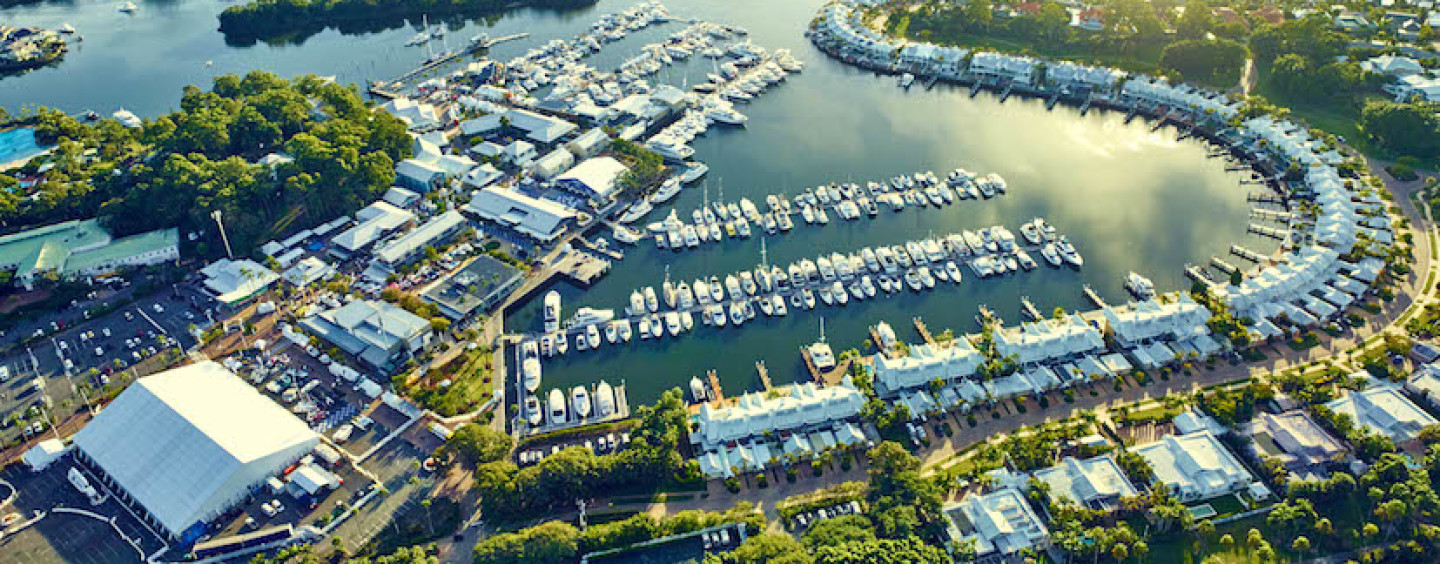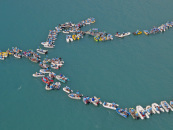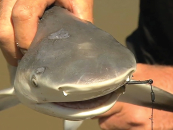“Start the new watersports season with us!”, “Navigator of Asian yachting.”, “Where adventure starts, pioneers meet and innovation shines.”, “Welcome to the number one boat show on the planet…”, “A legendary site. An iconic event. An epic move.”, “The rendezvous of the passionate.”
From Dusseldorf to Shanghai, from London to Fort Lauderdale, from Miami to Paris, these exciting and romantic slogans represent a universal industry that continues to appeal to a wider and more dynamic clientele worldwide. The industry is called “boat shows”.
In simple terms, let Wikipedia help us define what a boat show is: “A boat show is a public exhibition or trade fair of current boat models, debuts, concept vessels, or out-of-production classics.” A boat show is first and foremost an exhibition of products and services related to boating, yachting and everything nautical—state-of-the art, innovative technology, new and speciality services.
Over the decades, the concept of boat shows has evolved into a social event that covers tourism, lifestyle, fashion, dining, and other leisure activities. More than boats, boat shows are now showcasing a broader range of products and services related to water activities—such as watersports, waterfront lifestyle, board sports, diving, waterways safety and environment. Not-for-profit groups also participate at boat shows as an opportunity to inform and educate the public about boating, water safety and new skills.
Why boat shows
The boating industry relies on consumer preferences, behaviour and decision-making. Boat shows provide an opportunity for the general public to understand the products and the services that the industry offers, as well as to appreciate and adopt the boating lifestyle.
“Customers want and need to compare products and there is no other market place where exhibitors can show their full potential and distinguish themselves from others,” explains Goetz-Ulf Jungmichel, director of boot Düsseldorf and president of International Federation of Boat Show Organizers (IFBSO). “For people in general, it is important to feel and experience things in order to come to a clear decision.”
Boat shows are an industry in itself, with several international organisations focused on staging and managing boat shows annually. The IFBSO was founded in 1964 to help the development of boat shows and marine trade exhibitions worldwide. In North America, the National Marine Manufacturers Association (NMMA) is currently the “world’s leading producer of consumer boat and sport shows, managing more than twenty shows in the largest cities in the U.S.” The NMMA was formed in 1979, but traces back its roots to 1904 when the National Association of Engine and Boat Manufacturers of New York was founded. In Australia, the various state Boating Industries Associations (BIA) organise boat shows in major cities, such as Sydney International Boat Show (SIBS), owned and operated by BIA NSW & SA Pty. Ltd, and the Melbourne Boat Show, owned and operated by BIA Victoria.
These organisations and their continuing growth and success in staging boat shows over the decades prove how boat shows are important, not only for consumers, but also for the industry players.
“Boat shows exist to sell product and to promote the boating lifestyle,” states Ben Wold, executive vice president of NMMA. “The average boat dealer sells between 30 to 50 percent of their annual volume as a result of boat shows or leads generated at a boat show. People shop an average of four to six dealers or manufacturers while at a boat show, so it is a very efficient use of their time when in the market to buy a boat.”
Because of the GFC in 2008, the boating industry had to develop recovery plans and find positive strategies to keep the market interested. Boat shows were used to offer something different to keep the public interest in boating.
Wold says, “During the economic downturn, boats, engines and accessories sold at boat shows. Those who attended boat shows during that time were interested in buying a boat and were quality leads for dealers and manufacturers.”
A change in the themes and marketing plans of boat shows also manifested after the GFC. “Boat shows that have reinvented themselves over the past six years and have become places of entertainment, fun, experience, and of course, a well-sorted arrangement of new products were strong drivers for the industry,” says Jungmichel. “The boat shows had to become partners with the industry, provide service, create visitor potentials, and prove themselves trustworthy while leading the industry.”
The economic benefits for the locality or venue of a boat show cannot be understated. For Jungmichel, the benefits include: boaties seeing and recognising the marina; extra revenue for F&B outlets; more sales for hotels and accommodations in the area; more taxes for the community; and, further reinvestments in the infrastructure.
Although boat shows will always have financial significance to the locality, international boat shows provide higher economic benefits. Wold says, “The more international a show is will help determine how many exhibitors and people attend. The more exhibitors and attendees, the larger the economic impact.”
On the Gold Coast, boat shows add value to the tourism industry. “The shows add to our leisure tourism offerings,” says Cr Tom Tate, mayor of the City of Gold Coast. “They stimulate interest in this key marine construction and sales market. They drive greater interstate and international reputation for our city, and they are a fantastic day-out for families.”
International standards of success
All boat shows advertise to be the “epitome of excellence” in the industry. Some market themselves as one of the oldest, longest-running, or the biggest in area, or the largest in terms of exhibitors or visitors. Others claim to have the highest sales achieved for the year.
The numerous boat shows all over the world, whether international or otherwise, have to be aggressive in their marketing campaigns as well as be trustworthy in their claims, in order to stay competitive in the boat show industry.
The success of interstate or domestic boat shows can be measured through a review of their impact on the boating industry, from exhibitor and visitor feedback, as well as income generated from sales and leads.
International boat shows are further measured in relation to other factors. “For a boat show to be considered successful internationally, [we should] consider the size of the international exhibitor base, the number of country pavilions (if applicable), the quantity of international buyers, and its membership in the IFBSO,” asserts Wold.
Jungmichel affirms this with his criteria for a successful international boat show. “There should be a high number of international exhibitors, and a high number of international visitors. There should also be easy accessibility with products/boats. The venue must provide easy access for an international audience, such as nearby airports and hotels. And lastly, there should be perfect service in every dimension for exhibitors and visitors.”
Diversity in offerings at boat shows—products, services and activities—also assist in ensuring their success. “A successful boat show, like our boot Dusseldorf for instance, needs to present all issues around water sports and marine lifestyle,” declares Jungmichel.
The popularity of new water sports-related and lifestyle products add to the diversity in boat shows. “Paddlesports continue to grow rapidly. Electronics and technology are consistently popular. We’ve also seen increased interest and participation in fractional ownership and boat clubs across the U.S,” professes Wold.
So what are the aspects of staging a boat show that will ensure its success? Wold and Jungmichel both give their advice.
Jungmichel enumerates five aspects: (1) Perfect market research of the potential buyers; (2) Clear portfolio of exhibits; (3) Easy-to-manage set-up of the show with outstanding service being provided; (4) Fair pricing; (5) Living up to the international standards of show management (e.g. IFBSO). He further stands by this statement: “Just because there is a marina somewhere doesn’t mean it is capable of hosting a boat show!”
Wold recommends, “Always consider the five E’s: Exhibits, Education, Entertainment, Environment, and Experience. To be successful, a boat show needs a quality venue, exhibitors in a concentrated area, and the potential for sizeable number of quality attendees within 100 miles [160 km].”
In Australia
The marine industry in Australia is estimated to be worth $8 billion, with an export portion of around $1 billion. More than 3,500 marine businesses are involved that employ 28,000 people.
There are around 13 boat shows held in Australia, with a handful considered to be international. In Queensland, there are several boat shows that also integrate other industries such as fishing, camping, caravans, and other outdoor sports.
On the Gold Coast, there are two major international boat shows, one festival of boats, and a few other smaller marina-based boat shows, that not only offer international-standard products and services, but also showcase the city both as a boating destination and as the boat-manufacturing hub of Australia. May has become a season of boat shows in the city recently, ushering in the potential for a month of large-scale city event series—including other tourism and entertainment events that will benefit from these international boat shows.
The Sanctuary Cove International Boat Show (SCIBS) which started in 1989, is staged at the Sanctuary Cove marina. It is the first on-water boat show in Queensland. “For 27 years the boat show has not only showcased the boats and equipment, but has also highlighted this very special place in the world,” says Barry Jenkins, who organised the very first SCIBS in 1989. “The importance of SCIBS is its ability to attract the high end of the international market. It now holds a significant place in marine boat show calendars with the array of marine products on display at the show, demonstrating the unquestionable significance of SCIBS in the marine industry.”
“SCIBS is an established event which draws people from around Australia and the world. Its attendance figures and unique village atmosphere cannot be duplicated,” says Greg Haines, sales and marketing manager at Maritimo, a major exhibitor at SCIBS. “SCIBS is an event that combines the marine industry and its latest products with the social side of the marine village, and its restaurants and other attractions. It is known nationally and internationally for its size and the diversity of the boats and marine industry exhibitors, and that provides a positive boost for the local industry.”
The Gold Coast International Marine Expo, founded in 2011, is a not-for-profit association that stages an annual boat show within the facilities of Australia’s largest manufacturing plants and shipyards at the Gold Coast Marine Precinct in Coomera. Recently awarded Best Exhibition at the 2015 Australian Event Industry Awards, “the Expo is now recognised nationally and internationally for its innovative approach reinventing the concept of a traditional boat show,” declares Emma Brown, event and marketing manager of Expo.
Staged side-by-side with the Expo, the Riviera Festival of Boating also had its beginnings in 2011. The Festival brings together Riviera and Belize owners and aspiring ones in one event where they can meet each other, enjoy free entertainment, learn new technology and skills, and explore the Expo. “Riviera proudly supports the Gold Coast International Marine Expo – its mission, its support for our industry, and its charter to help raise funds for charity,” says
Stephen Milne, brand and communications director at the Riviera Group. “With the Expo now aligning with other major boating events, including the Riviera Festival of Boating, it has ensured manufacturers and importers are able to build and deliver yachts to their new owners in time for the following summer.”
2015 marked the first year where the city’s major international boat shows were held on the same dates. Both reported success in sales and quality leads. SCIBS exhibitors have commented that SCIBS 2015 was the best one since 2008, while Expo affirms that 2015 was their biggest one in five years. From the published reports of both shows, the 2015 parallel events generated more than $65 million in sales, and a total of more than 56,000 visitors and 500 exhibitors of the shows combined.
What to expect in May 2016
Boat show season will begin as the Southern Hemisphere winter arrives. It is worth noting that many international boat shows are held in winter time because they offer the right timing when purchasing a new boat. Ordering early allows a buyer to select features, colours and options, and still ensure delivery by spring or summer time. Being able to be close to boats in a usually off-boating-season allows buyers to enjoy “testing the waters” all in one venue before making that final decision.
In May this year, the Gold Coast will be a host to parallel boating events making another full weekend. The excitement among the organisers and the exhibitors is gaining momentum as the event dates draw closer.
For most of the public, boat shows can be overwhelming. The free samples, contests, learning demonstrations, and play areas for the young ones, are a few of the tempting features that attract families to attend boat shows. More than these, boat shows offer the visitor the opportunity to feel the quality of the seating, check out the height of the console, and assess the colour scheme, and the list goes on. With many boat manufacturers represented and multiple dealers present, there will be more options for better deals. Information about new technology and innovations that improve passenger safety, the latest watersports equipment, and various brands on offer help in enhancing the experience and encouraging the boating lifestyle.
It is important for buyers to conduct research prior to attending the boat shows. Identifying the needs, wants, preferences of the users (individual, family or group) is a good way to start. With manufacturers and dealers available to answer questions at the boat shows, it will save time to have the basic questions covered (such as type of boat needed or preferred, use of the boat, how much time to be spent using the boat, etc.). Another important aspect to consider is to narrow down the list of specific brands or models that one is interested in. Checking the regular price of boats (pre-boat show price) is also a must, to be able to compare with a “boat show special”. One of the most important things to remember is to bring friends and family, have a day enjoying everything on offer, and embrace the boating lifestyle.
Written by Roselle Tenefrancia & Jamie Roberts
The Chicago Boat Show began in 1907. It opened its gates at 3pm on New Year’s Day.
Europe’s first boat show is the London Boat Show, which began in 1954.
Brisbane Boat Show was first held in 1961. The first show in 1961 was held at Brisbane’s City Hall. There were 11 exhibitors with product on display totalling in excess of £70,000.
Sydney International Boat Show first ran in 1968. It is the largest recreational marine event in the Southern Hemisphere.[/toggles]






























